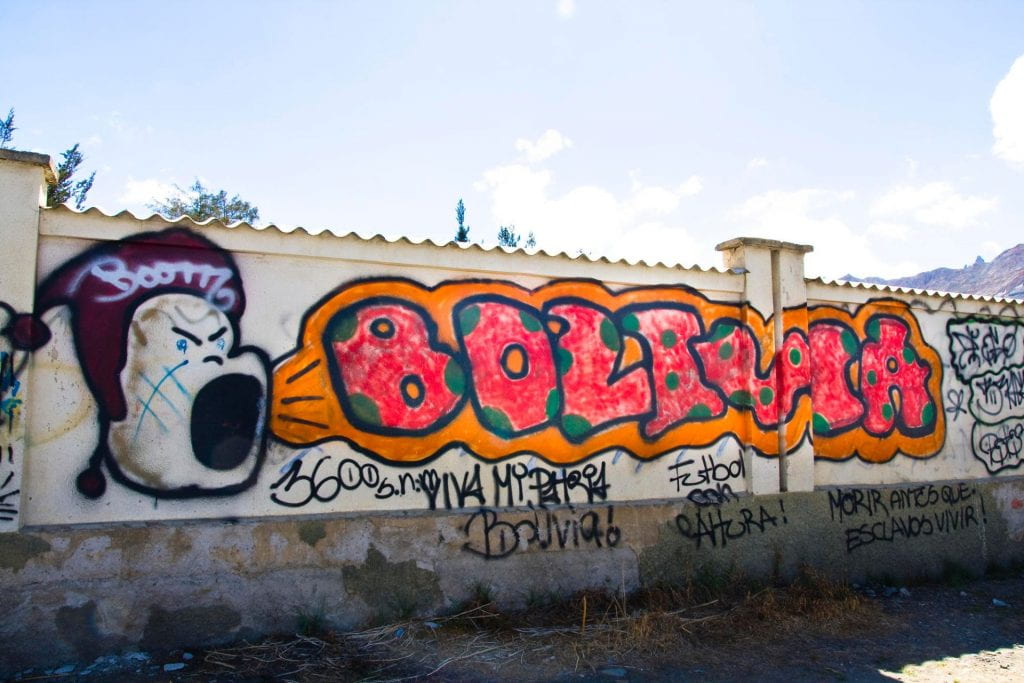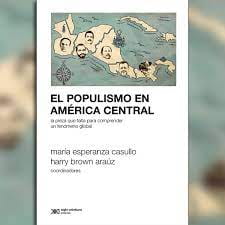Beyond Caudillos
The Need to Create a Strong Multiparty System
Driving through La Paz, Bolivia’s capital city, one sees signs of the remarkable political transformation since the 2005 election of Evo Morales, Bolivia’s first indigenous president. Eighteen months after the December 2009 reelection—which Morales won by a broad margin (64.2%)—and more than a year after the April 2010 municipal and regional elections, campaign murals still line the thoroughfares that bustle with packed minibuses ferrying paceños up and down the length of city. Besides scattered slogans for opposition candidates, most posters support Morales and MAS. The name “Evo” is prominent, including on a massive mural found between the middleclass neighborhoods of San Jorge and Obrajes, with the slogan: “One single leader, one single nation, one single project” (Un solo líder, un solo proyecto, un solo país). In La Paz, at least, Evo Morales dominates the city’s physical landscape.
Morales rose to prominence following a massive wave of protests that forced then-president Gonzalo Sánchez de Lozada to resign and flee the country in October 2003. As leader of the largest “anti-systemic” legislative party, Morales was well positioned to become the political leader of a broad coalition of social movements. His victory in the December 2005 presidential election (with 53.7% of the vote, Morales was the first candidate to win a majority in the democratic era) made him the undisputed leader of the left-popular forces with a broad popular mandate. Between 2005 and 2010, Morales and MAS won a string of electoral victories, demonstrating sustained popular support for the new regime’s “democratic and cultural revolution.”
The October 2003 political crisis not only delegitimized Bolivia’s neoliberal model, but shattered its political party system—which was already described as weak or “inchoate.” In 2005, only the historic National Revolutionary Movement (Movimiento Nacionalista Revolucionario, MNR) contested the general elections, managed only a distant fourthplace finish with 6.4% of the vote; it did not contest the 2009 elections.
New electoral vehicles lacking significant institutional organization dominate the post-2003 political period. This includes MAS, which only emerged as a political party in 2002, becoming a catchall alliance of anti-establishment political actors and social movements. In fact, MAS does not consider itself a party, and Morales often relies not on the party structure (such as it is) but on CONALCAM (Coordinadora del Cambio), a loose coalition of social movements. Where the situation is particularly troubling is within the political opposition.
By 2002, the party system was under stress. Alongside MAS, two other new parties challenged the neoliberal establishment: a radical indigenous party led by Felipe Quispe (Movimiento Indígena Pachakuti, MIP) and a conservativepopulist party led by Manfred Reyes Villa (Nueva Fuerza Republicana, NFR). MIP became the country’s most successful ethnic indigenous party to date, placing fifth in 2002 with 6.1% of the national vote and six legislative seats. However, MIP collapsed in 2005 and has since disappeared. Reyes Villa, despite virtually tying with Morales in 2002, sat out the 2005 presidential contest, distancing himself from his own party and forming a new electoral vehicle (Alianza de Unidad Cochabambina, AUN) to campaign for the Cochabamba prefecture.
A pattern of disposable electoral vehicles is pronounced at the national level. In 2005, anti-Morales figures from “traditional” or “systemic” parties created new electoral vehicles. Most flocked to Democratic and Social Power (Poder Democrático y Social—PODEMOS), behind Jorge “Tuto” Quiroga, a former president of the center-right Democratic Nationalist Action (Acción Democrática Nacionalista, ADN). Others joined former economic minister and Bolivian tycoon Samuel Doria Medina’s National Unity Front (Frente de Unión Nacional, UN). Of the two, only UN is on the path to becoming a consolidated, institutionalized political party, having consistently contested every national or local election, beginning with the December 2004 municipal elections. However, UN remains a minor party, never achieving 10% of the national vote in any contest.
By the 2009 election, PODEMOS—which comprised the largest opposition bloc in the legislature and even controlled the Senate—ceased to exist. In its place, another new vehicle, National Convergence (Convergencia Nacional, CN), emerged as the largest opposition party. This pattern repeats at regional and municipal levels. Only a handful of regionally based minor parties show signs of consolidation, most notably Movement without Fear (Movimiento Sin Miedo, MSM) in La Paz and Social Alliance (Alianza Social, AS) in Potosí. But in many important regions, such as Santa Cruz and Cochabamba, each election presents a new constellation of parties (even if the faces remain the same). Moreover, these do not coordinate across the country, municipal, regional, and national levels.
While Morales’ opponents point to his authoritarian tendencies, the inability of the opposition to forge coherent, consistent and consolidated political parties facilitates the hegemonic position enjoyed by Morales and MAS. In a highly fractured and fluid political environment, MAS is a tempting alternative to voters who support many (if not all) aspects of the new regime’s “process of change” and seek a sense of political stability. Morales astutely uses government resources to secure support from leaders of local and regional social movements, undercutting the ability of new parties to consolidate their position. In short, MAS is hegemonic largely because it is the only political party with a truly “national” scope.
However, this poses two significant problems for the long-term viability of the new regime. First, the opposition’s weakness facilitates personalist tendencies within MAS. Morales’ status as the party’s dominant, charismatic figure is evident. Not only had the constitution been modified to allow for his reelection in 2009, but recent statements by Vice-President Álvaro García Linera indicate the president may seek reelection in 2014 to “guarantee the [process of ] change.” But if only Evo Morales can guarantee the continuation of his regime, one has to wonder how widely Morales’ agenda is shared—even within his own party.
Recent analyses suggest MAS is weakly institutionalized, hierarchical, and dominated by Morales, thus resembling previous “systemic” parties, dominated by powerful caudillos who made decisions with little input beyond a select inner circle. If so, MAS risks losing grassroots legitimacy (evidenced by recent social movement mobilization against Morales’ government). Unless MAS transforms into an institutionalized party that does not depend on the personality of Evo Morales, it risks the same fate as the personalist “systemic” parties. The concept of a “plurinational state” is difficult to sustain within the framework of a singleor dominant-party system—particularly one dominated by a single individual. Without a vibrant, institutionalized, legitimate, competitive multiparty system, its long-term viability remains uncertain.
The second—and perhaps most important—problem facing Morales’ regime is the absence of a “loyal opposition.” Morales has shown limited ability to cultivate independent allies. One key example was the recent bitter split between MAS and MSM shortly after the December 2009 election. A small centerleft party with a strong presence in the city of La Paz (where it has controlled the mayorship since 1999), MSM loyally supported Morales beginning in 2005, playing a key role in expanding his appeal to the middle class. After the party decided it would continue its tradition of campaigning independently in municipal elections, Morales vindictively attacked the party’s leader, Juan Del Granado, a noted human rights champion who had regularly appeared alongside Morales at public events, as merely another “neoliberal” and “anti-popular” conservative opponent. Other political figures—including a growing number of MAS dissidents—have faced similar fates.
The irony, of course, is that the longterm fate of the new regime—including its many important social and economic reforms—depends on the ability of opposition parties to “buy into” the basic sociopolitical model. In an atmosphere in which the type of party pacts (partidocracia) of the neoliberal era are in disrepute, acceptance of the need for multiparty alliances, coalitions, and negotiations— rather than winner-take-all, scorched earth politics—is unlikely. Yet the future of Bolivia’s new “plurinational state” depends on a broadly shared consensus across the political spectrum. In the end, the fact that Morales and his inner circle do not trust any opposition party or figure to continue his trajectory (despite programmatic differences) says more about the tenuousness of Morales’s own regime and its democratic character than it does about the aims of his various opponents.
Related Articles
A Review of Alberto Edwards: Profeta de la dictadura en Chile by Rafael Sagredo Baeza
Chile is often cited as a country of strong democratic traditions and institutions. They can be broken, however, as shown by the notorious civil-military dictatorship of Augusto Pinochet (1973-1990). And yet, even a cursory view of the nation’s history shows persistent authoritarian tendencies.
A Review of Born in Blood and Fire
The fourth edition of Born in Blood and Fire is a concise yet comprehensive account of the intriguing history of Latin America and will be followed this year by a fifth edition.
A Review of El populismo en América Latina. La pieza que falta para comprender un fenómeno global
In 1946, during a campaign event in Argentina, then-candidate for president Juan Domingo Perón formulated a slogan, “Braden or Perón,” with which he could effectively discredit his opponents and position himself as a defender of national dignity against a foreign power.





